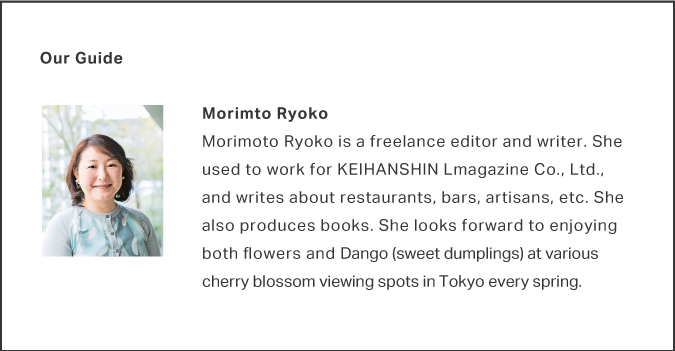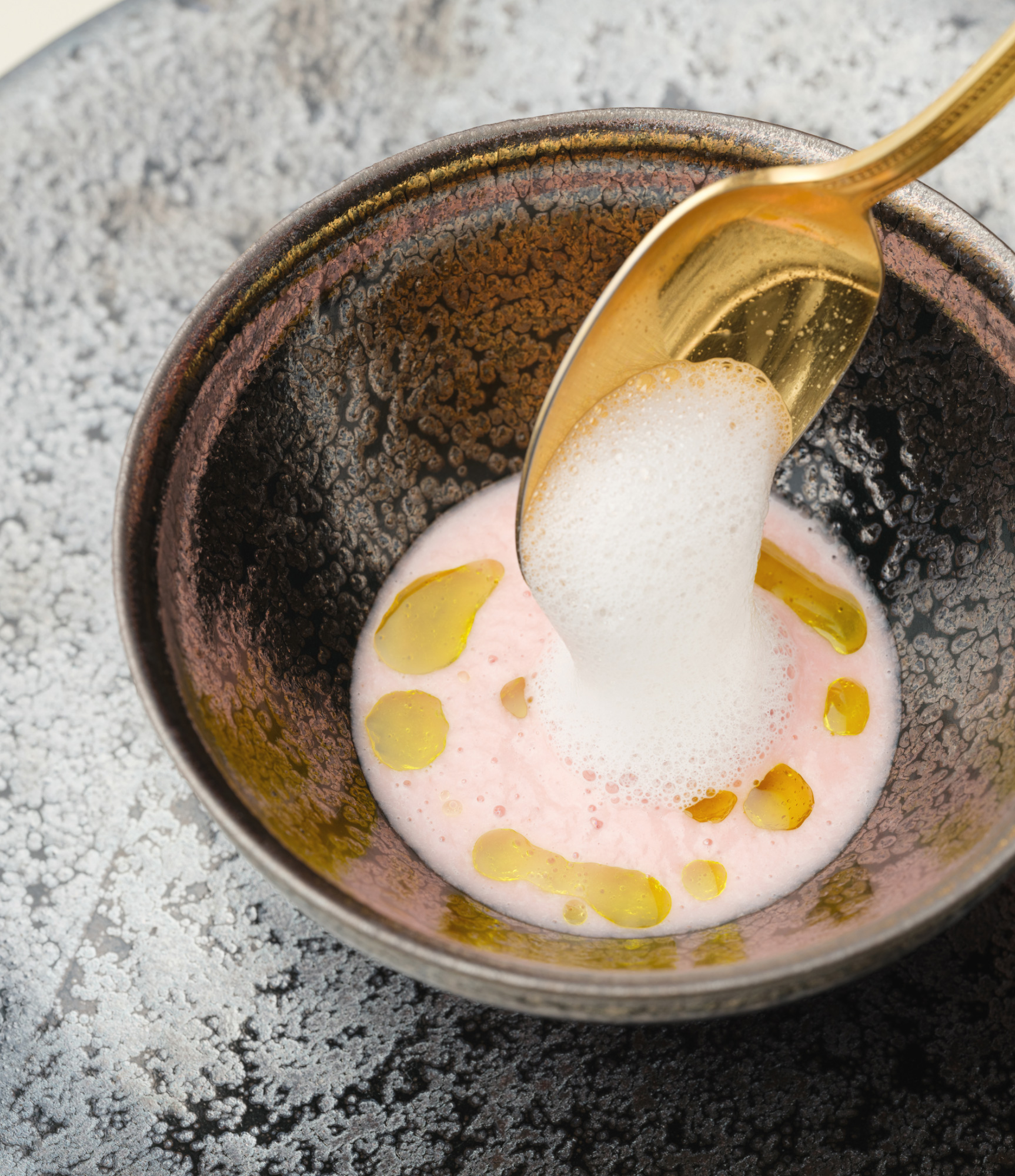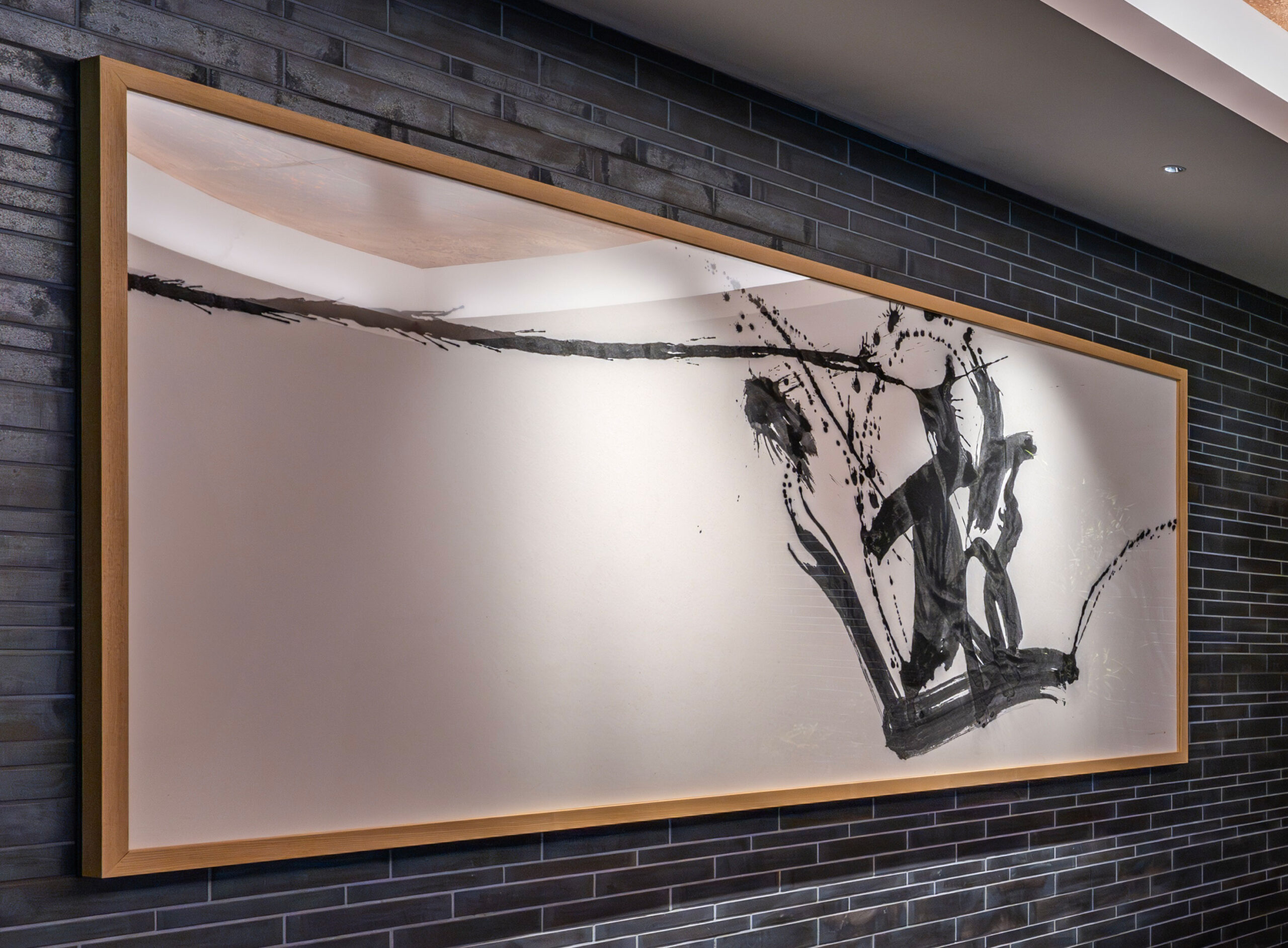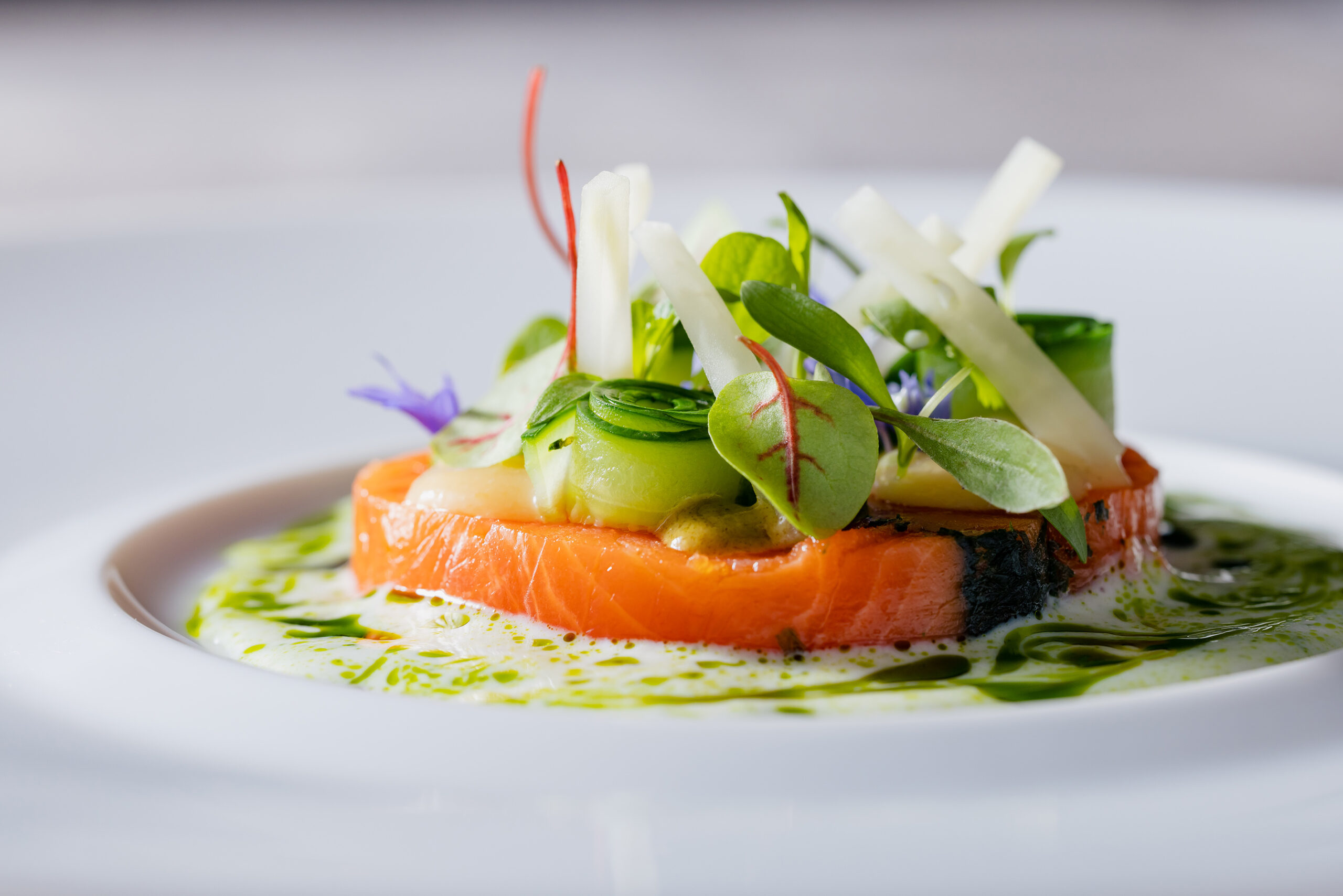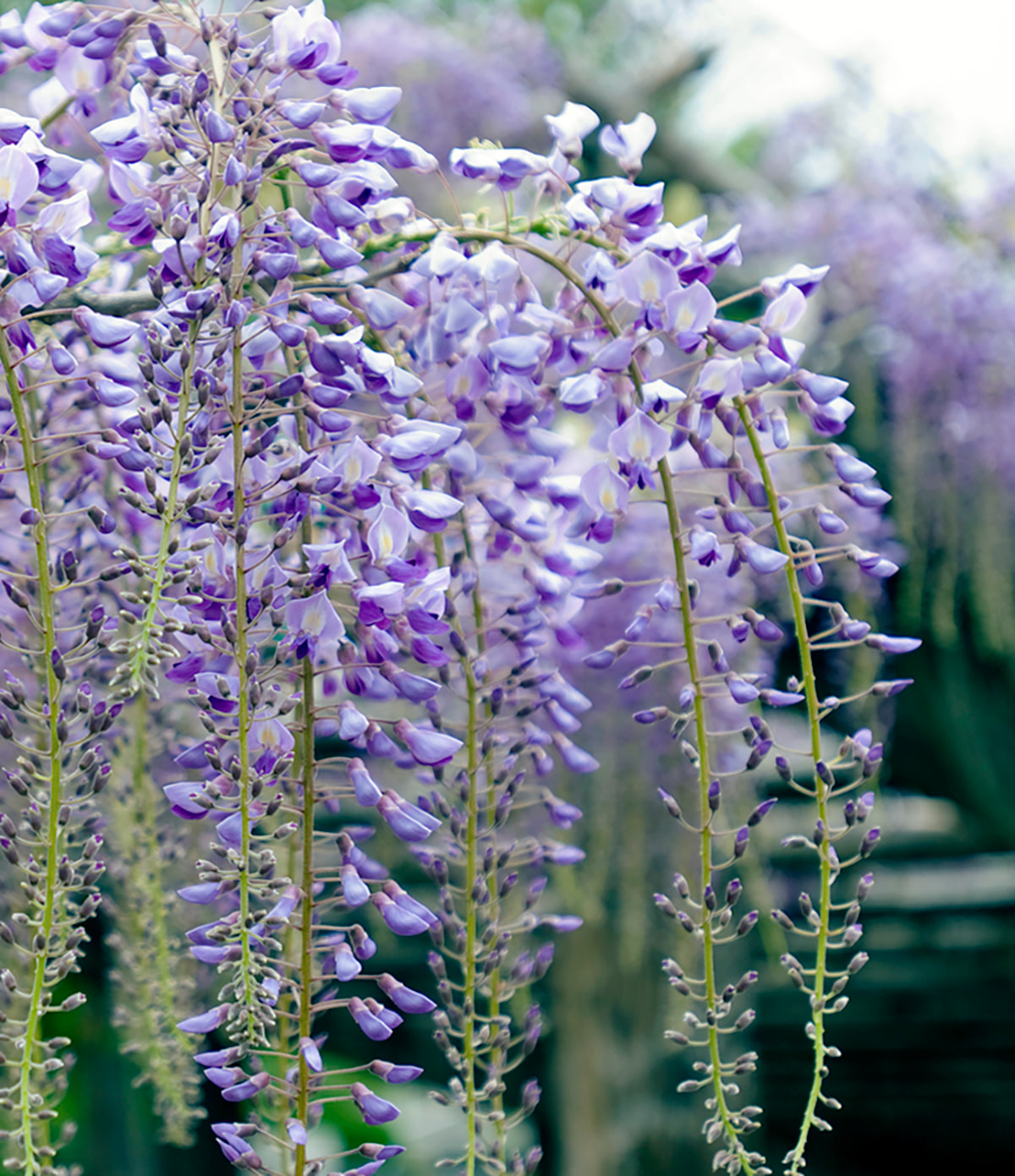
Hama-rikyu Gardens Rikugien Gardens The Best Gardens to See Cherry Blossoms in Tokyo
This article was originally published in the Spring 2016 issue of The ROYAL.
All products, services, and prices are subject to change.
An Excursion from RIHGA Royal Hotel Tokyo
Beautiful spring has finally come. Undoubtedly, the symbol of spring in Japan is cherry blossoms. From RIHGA Royal Hotel Tokyo, where you can see beautiful cherry blossoms along the Kanda River, an editor, Morimoto Ryoko, took a little trip to two areas, the glamorous Ginza neighborhood and the academic Komagome area, visiting some famous flower gardens created in the Edo period.
(Photography by Takenouchi Hiroyuki)
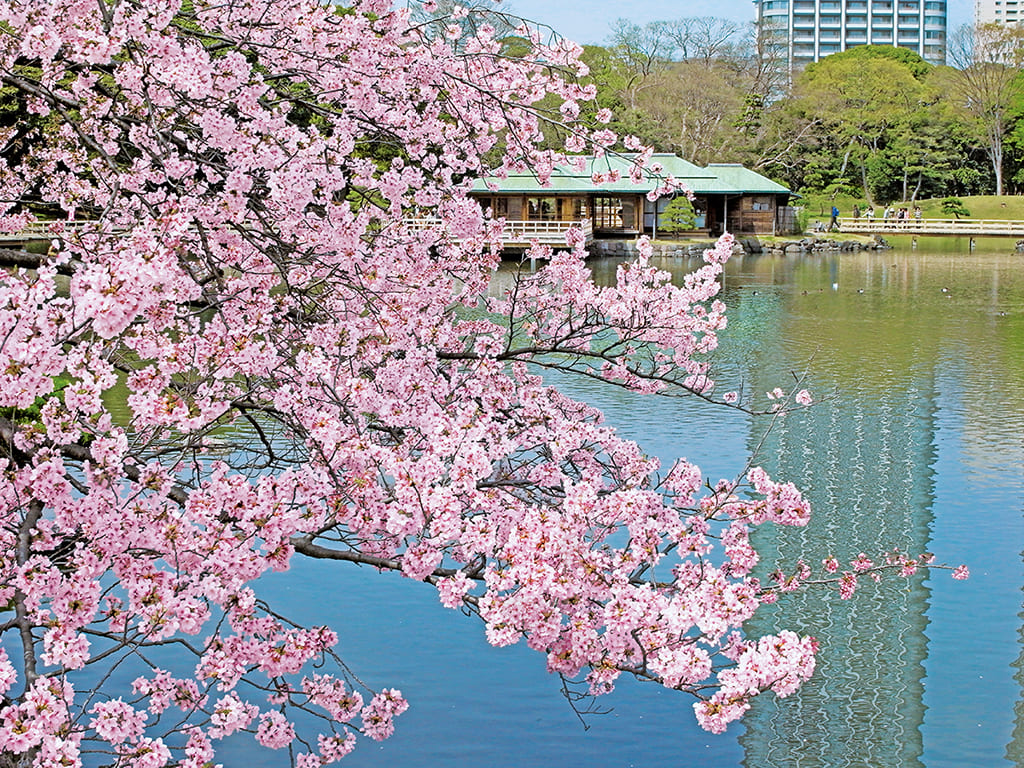
Cherry blossoms, the Imperial Palace, and Japanese stationery…
Enjoy the Spring in Ginza.
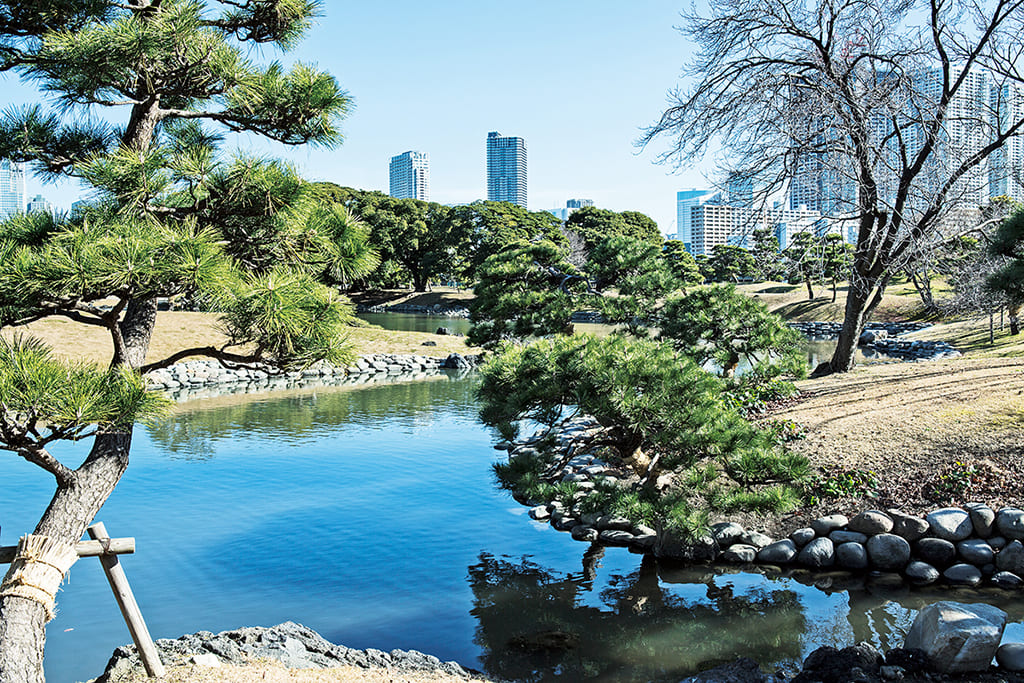
“Hama-rikyu Gardens” was formerly a part of the second home of Matsudaira Tsunashige (younger brother of the 4th Shogun, Tokugawa Ietsuna) and was once called “Hama-Goten.”
Here, you can see blossoms of Somei-Yoshino (Yoshino Cherry) in early April and Satozakura (oriental cherry) in mid-April. The “300-year-old pine tree,” said to have been planted by Ienobu, the 6th Shogun, is just magnificent. The
contrast between the modern buildings of Shiodome and the Japanese garden is one-of-a-kind. You can also try a river cruise down the Sumida River to Asakusa or Odaiba.
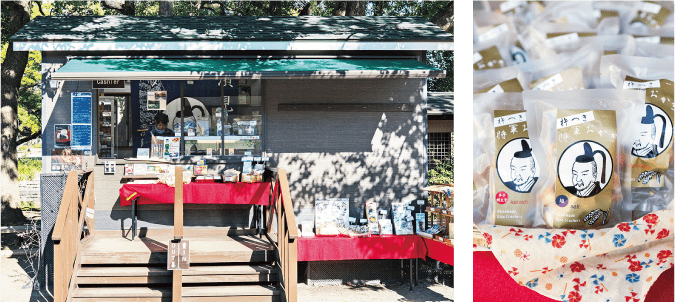
Let’s start our trip with the most popular cherry blossom viewing spots.
“Hama-rikyu Gardens” was once a part of a Shogun family’s second home called “Hama-goten” and has a seawater pond, unlike many other ordinary feudal lords’ gardens. Behind the cherry blossoms around the “Shioiri-no-ike” are the tall buildings of Shiodome, reminding you that you are in the middle of Tokyo. If you turn around, you can see Tokyo Bay, the Rainbow Bridge, and Odaiba in the distance. The “Shogun’s landing” in a corner makes you wonder if the feudal lord himself has also enjoyed the cherry blossoms here. You can also find the mighty 300-year-old black pine tree planted by Tokugawa Ienobu, the 6th Shogun. Time flies when you are exploring this garden.
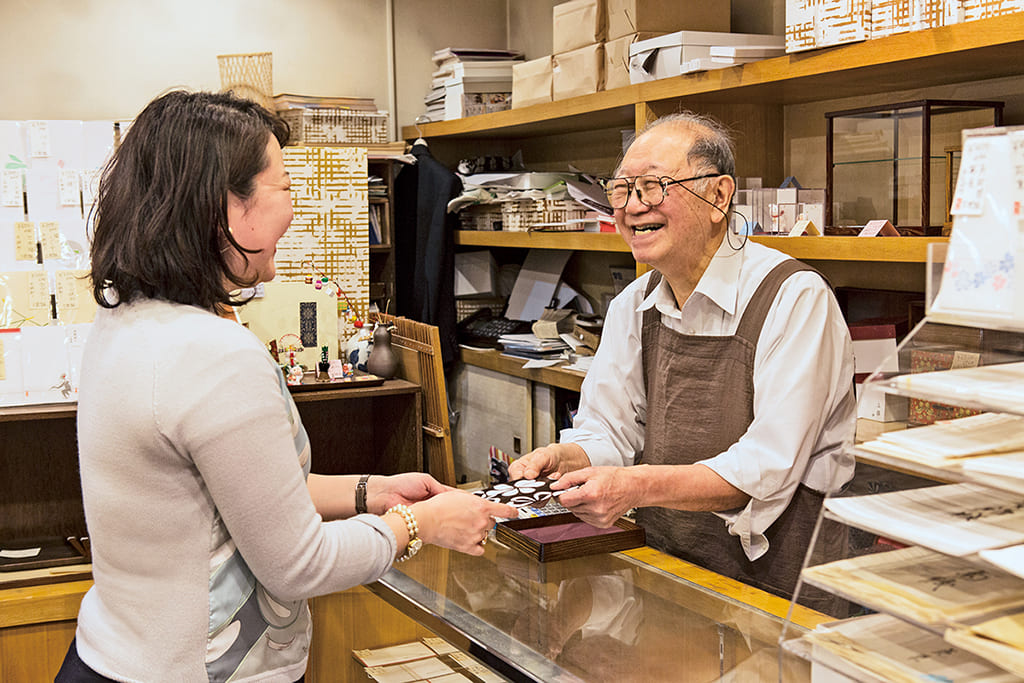
Established in 1914, this store in Ginza sells Japanese stationery and Edo-style woodworking. The handmade woodblock-printed packets (from ¥572) and letter paper with family crests and seasonal designs are both elegant. The cheerful 82-year-old owner, Hiratsuka Hikotaro, has many fans.
Now, let’s walk for about 10 minutes to Ginza 8-chome. Our next destination is “Hiratsuka,” a Japanese stationery and Edo-style woodworking shop. All of their woodblock-printed Washi (Japanese paper) products are original, simple, unique, and beautiful. In addition to the Katabami family crest items, they offer more than 100 seasonal products. I feel like buying a cherry blossom postcard and writing a letter to my loved ones.
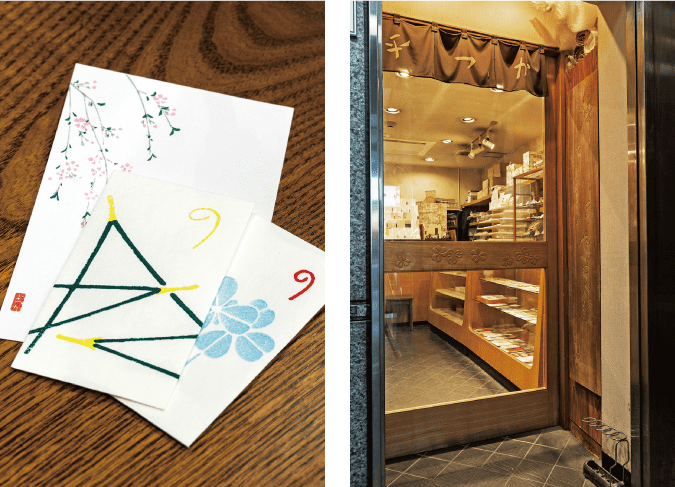
The cheerful owner, Hiratsuka Hikotaro, is a Ginza native. If time allows, he might tell you about Ginza and show you a collection of past products that are no longer available because of the worn-out printing blocks. The sophisticated atmosphere of “Hiratsuka” and the craftsmen’s skills are a sight to behold. Many of their regulars are also masters of chic and thoughtful arts, including calligraphy and tea ceremony. Visiting here, you will also be able to cultivate your sense of beauty.
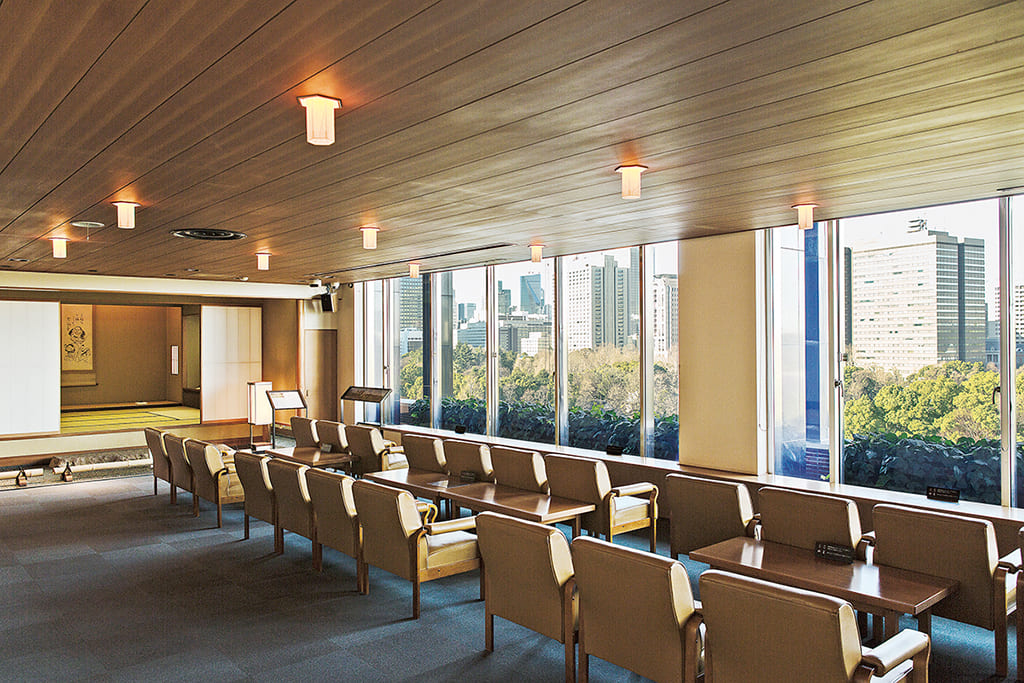
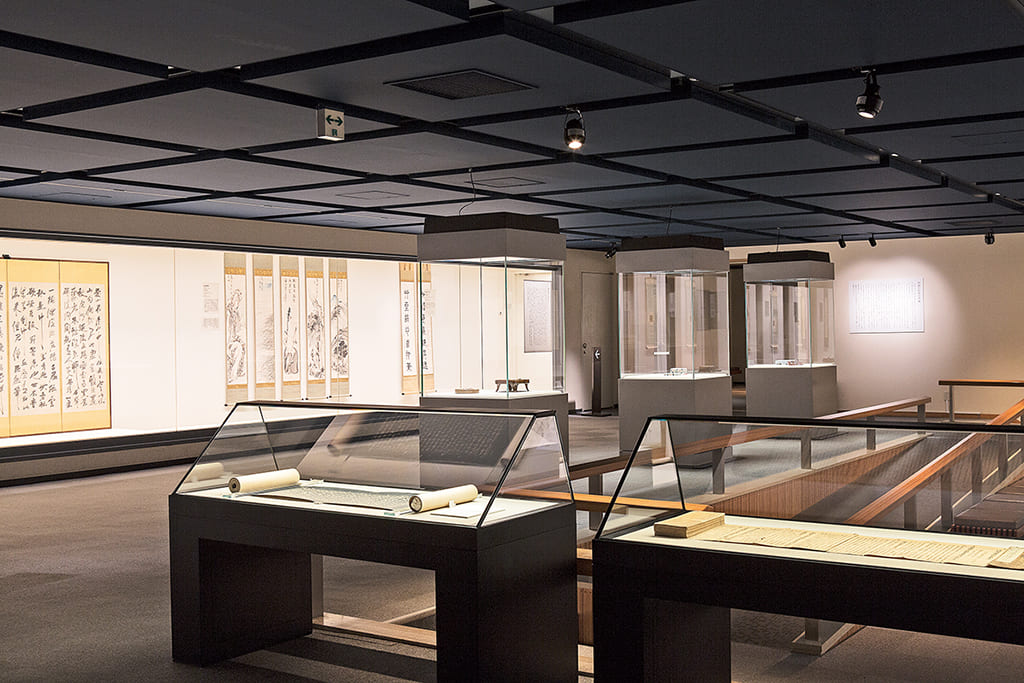
The museum holds a collection of 10,000 pieces of Japanese and Oriental antiques, including two National Treasures. The museum is relatively small yet highly acclaimed for its satisfying exhibits. In the 50th anniversary exhibition “Celebrating the Beauty of Japanese Art” (from April 9), the first, second, and third volumes of the National Treasure “Ban Dainagon Emaki” will be exhibited for three terms.
Our next stop is the “Idemitsu Museum of Arts” in Marunouchi. The museum owns one of the best collections of oriental antiques in Tokyo, and it will hold its 50th-anniversary exhibition starting on April 9. The exhibition’s main attraction is one of Japan’s National Treasures, “Ban Dainagon Emaki.” You don’t want to miss this chance to see the famous art piece you have seen in your textbooks. Another thing you don’t want to miss is the view of the Imperial Palace from the lobby.
The background landscape and the garden harmonize, and the view from the window looks almost like a picture. Enjoy the scenery from the window while sipping on their complimentary green tea. You also can’t miss Sengai’s “Shigetsu Hotei” merchandise, the first collection in their merchandise series, available at the museum store. The faces of Hotei and the child will surely make you happy.
Finally, we are back at the RIHGA Royal Hotel Tokyo, and we will take a break at the Garden Lounge. Let’s enjoy a delicious cake and a moment of bliss, looking at the beautiful greenery of the Okuma Garden.
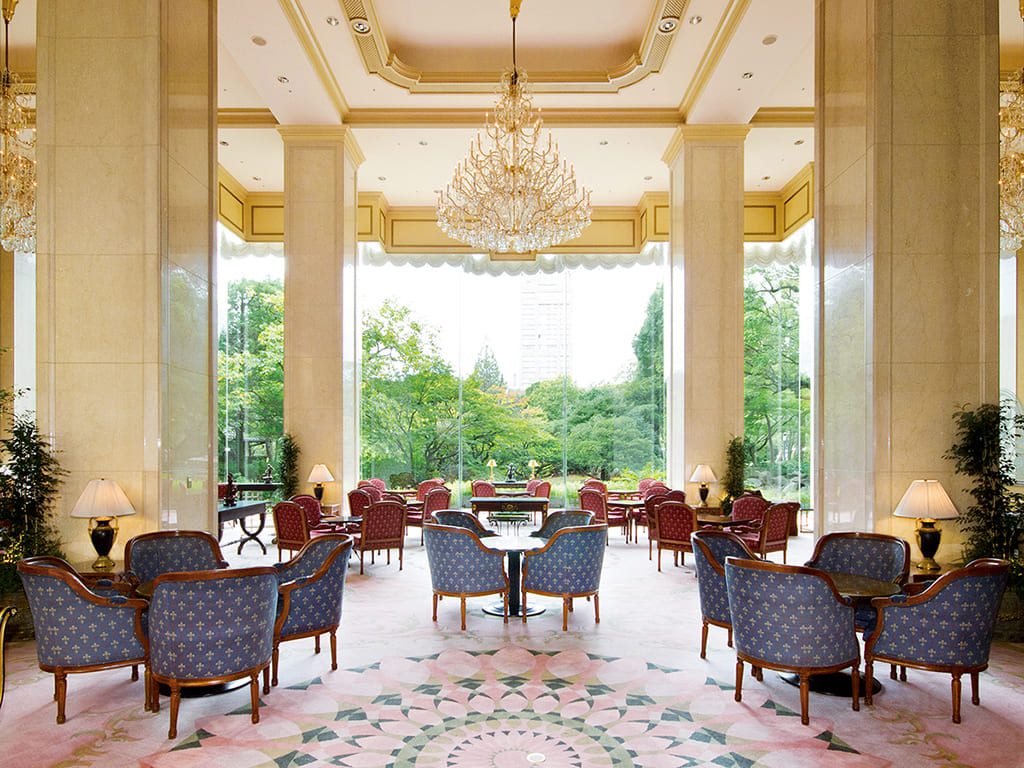
The atrium ceiling lets in abundant light and the Okuma Garden behind the windows proudly exhibits its seasonal beauty. Enjoy an elegant tea time at the lounge and forget your everyday life.
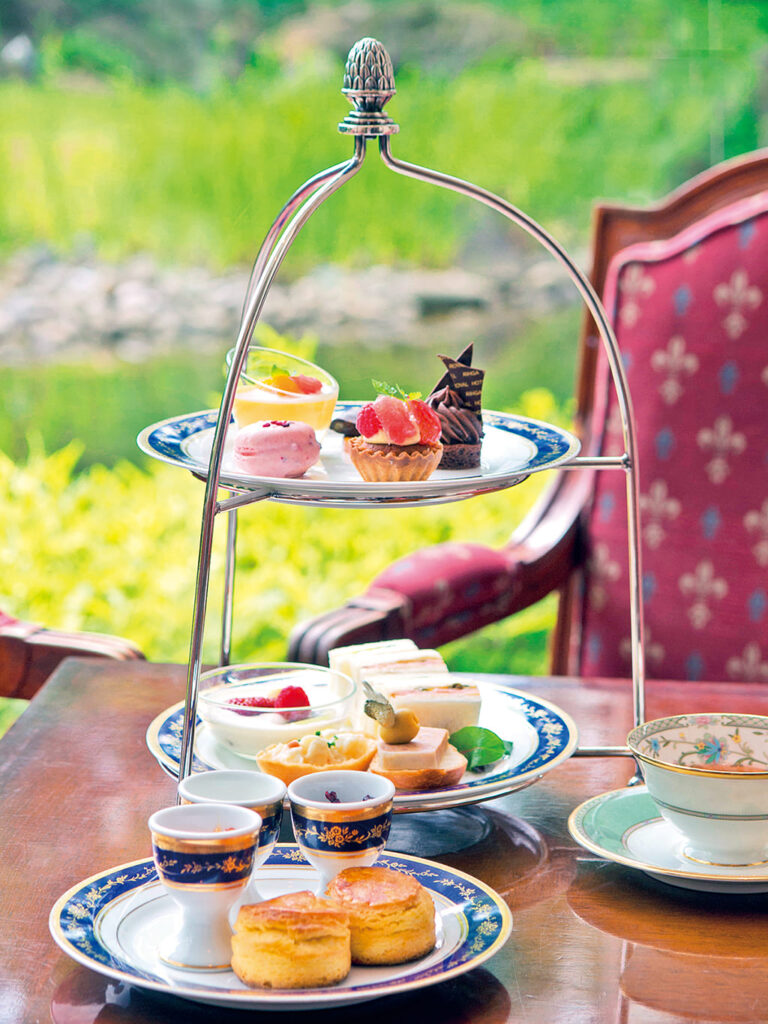
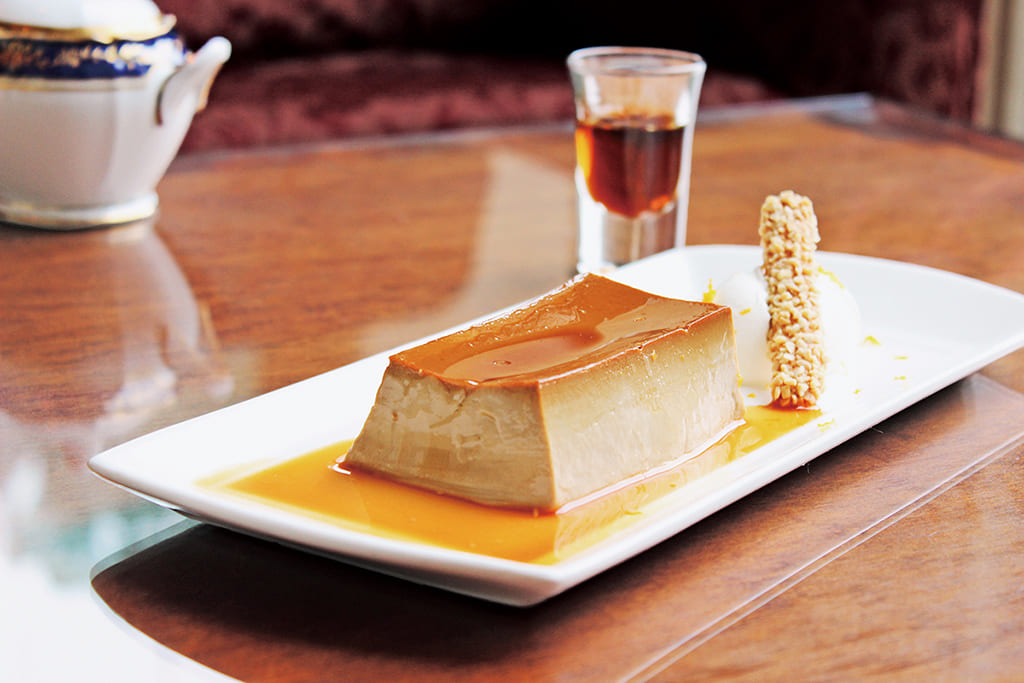
【DATA】
Hama-rikyu Gardens
1-1, Hama Rikyu-teien, Chuo-ku, Tokyo
Phone: +81(0) 3-3541-0200 (Hama-rikyu Gardens Administration Office)
Opening Hours:
9:00~17:00 (last admission at 16:30)
9:00~18:00 (March 26~May 8)
9:00~16:30 (Nakajima-no-ochaya and Hamamise)
Admission: ¥300 (65 and over: ¥150)
(Free admission for children aged 12 or younger and junior high school students living or attending school in Tokyo)
Free admission on May 4 and October 1
Hiratsuka
8-7-6, Ginza, Chuo-ku, Tokyo
Phone: +81(0) 3-3571-1684
11:00~18:00
Closed on: Sundays and holidays
Idemitsu Museum of Arts
9th Floor, Teigeki Bldg., 3-1-1, Marunouchi, Chiyoda-ku, Tokyo
Phone: +81(0) 50-5541-8600
Admission: ¥1000 (High school and college students: ¥700)
Free admission for children aged 15 or younger (with parent or guardian)
Opening Hours: 10:00~17:00 (last admission at 16:30)
Closed: Mondays (Tuesday if Monday is a holiday), New Year holidays, and during exhibition changeover
Visiting an Urban Oasis
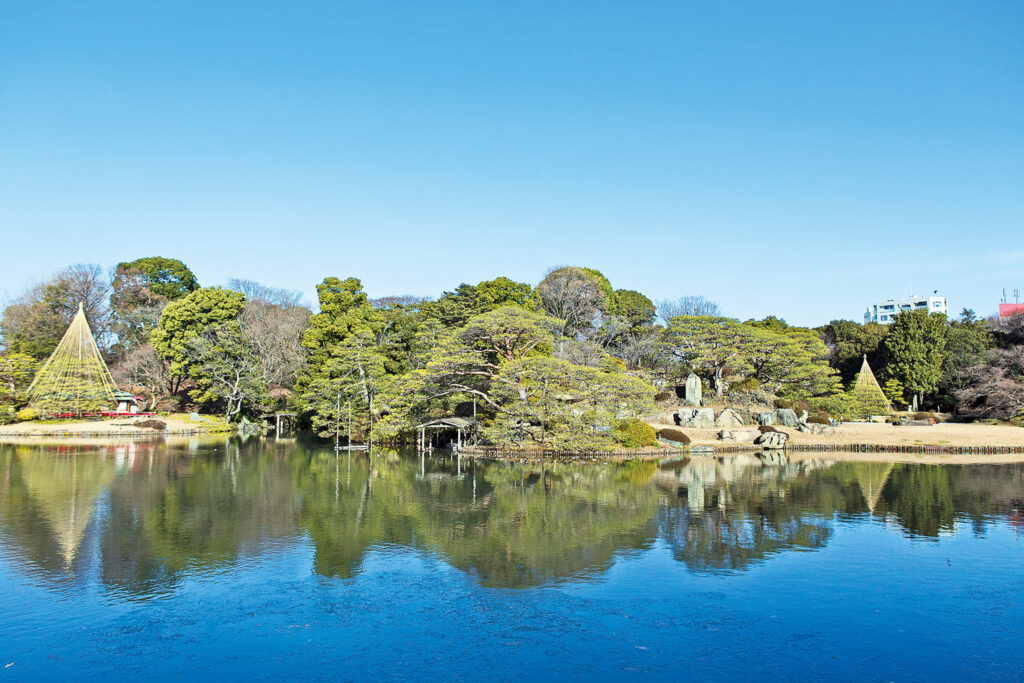
“Rikugien Gardens” is a Kaiyu-style garden with many elements, such as a pond. It took Yanagisawa Yoshiyasu seven years to create this garden, and it was built on the land given to him for his residence by Tokugawa Tsunayoshi, the 5th Shogun. The weeping cherry trees bloom in mid-March and look like a waterfall when in full bloom.
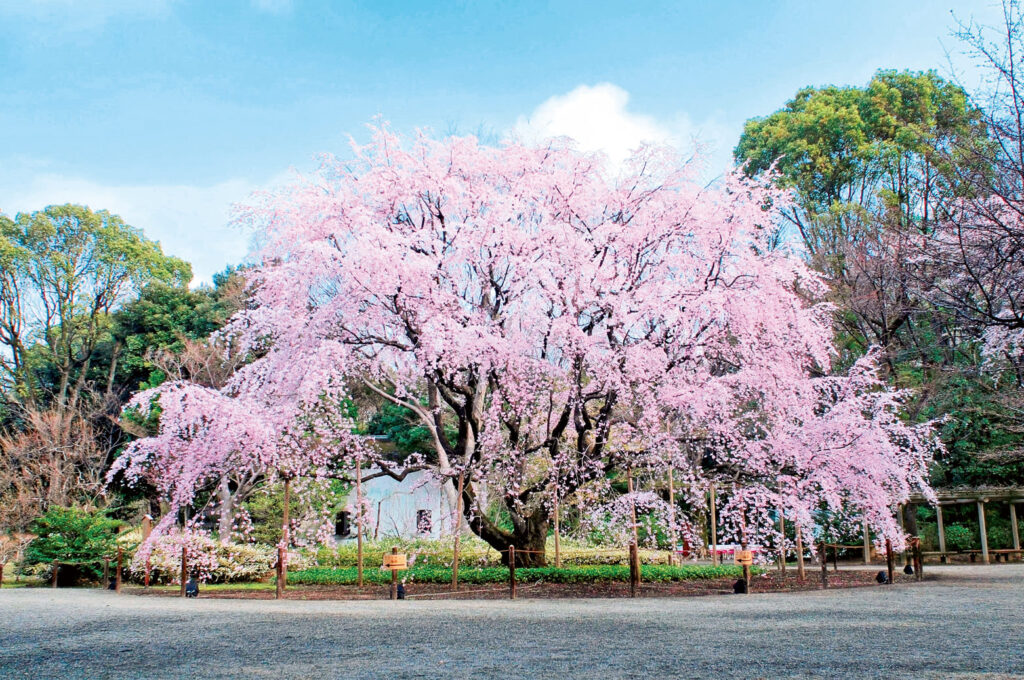
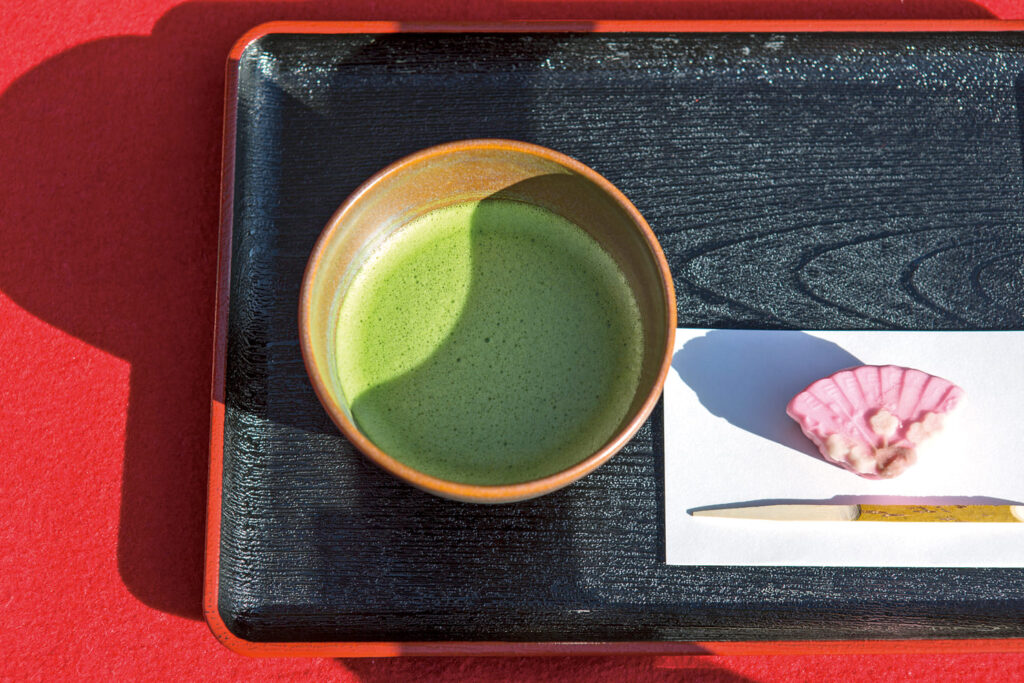
“Rikugien Gardens” is a Japanese garden created by Yanagisawa Yoshiyasu, a favorite of Tokugawa Tsunayoshi, the 5th shogun. The main attraction here is the weeping cherry trees with magnificent branches. The trees have many fans, and the visitors form a huge line to see the lit-up cherry blossoms every year. During the daytime, cherry trees look pretty and gentle, and they look alluring during the nighttime. The garden is located in a residential area called “Yamato-mura,” so it is very quiet. This well-maintained garden is truly an “urban oasis.”
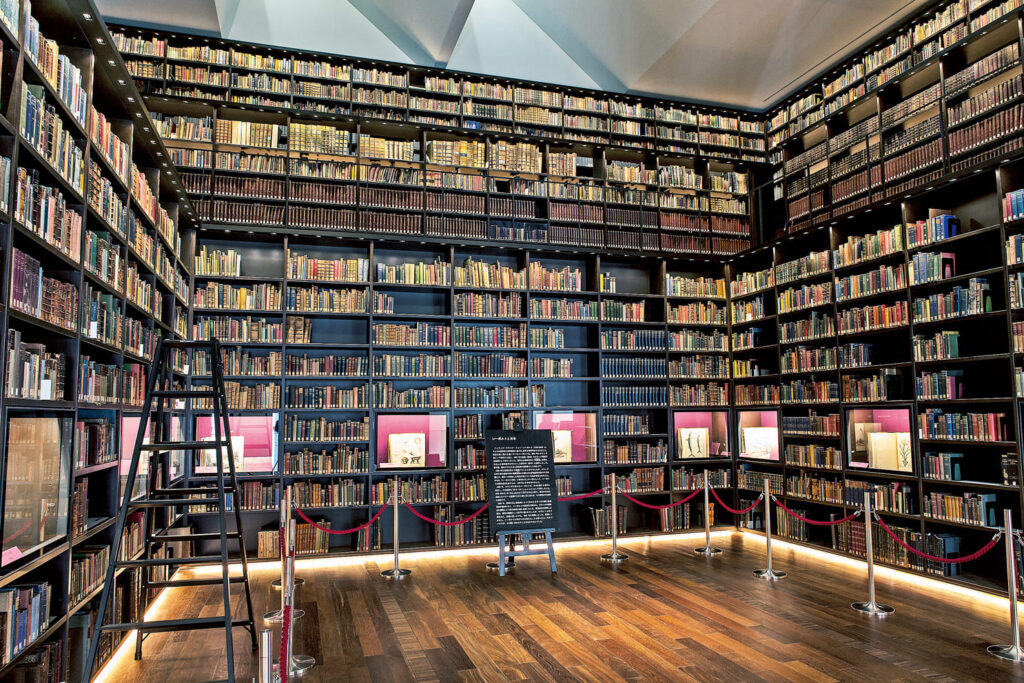
Established in 1924 by Iwasaki Hisaya, the third president of Mitsubishi, the Toyo Bunko is the oldest and largest research library in Japan. This museum opened in 2011 to promote Oriental studies and is popular for its unique exhibits selected from the library’s collection of approximately 1 million volumes. There is also a café.
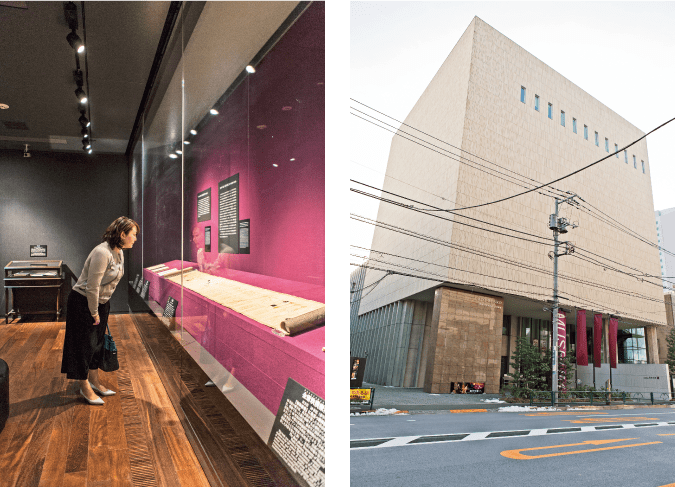
Rikugien became the second home of the Mitsubishi founder Iwasaki Yataro during the Meiji period. The Toyo Bunko, located just around the corner, is a research institute/library specializing in Oriental studies, established by Yataro’s son, Hisaya, about 90 years ago. The museum stores an impressive collection, “the Morrison’s Stacks,” and holds unique exhibitions featuring approximately 1 million books, which are sure to stimulate your intellectual curiosity.
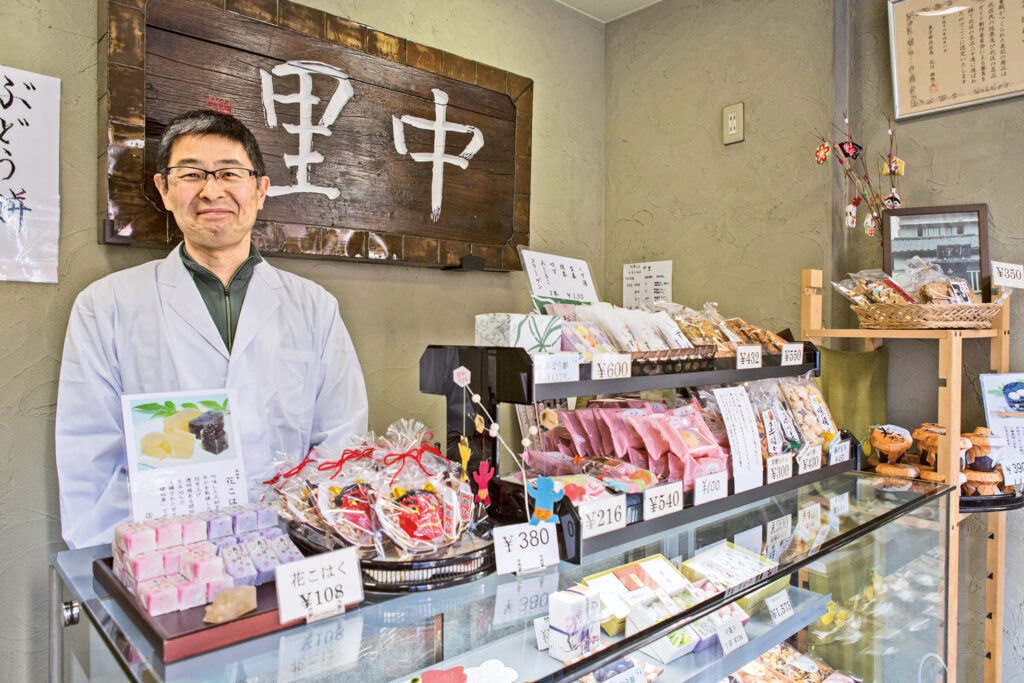
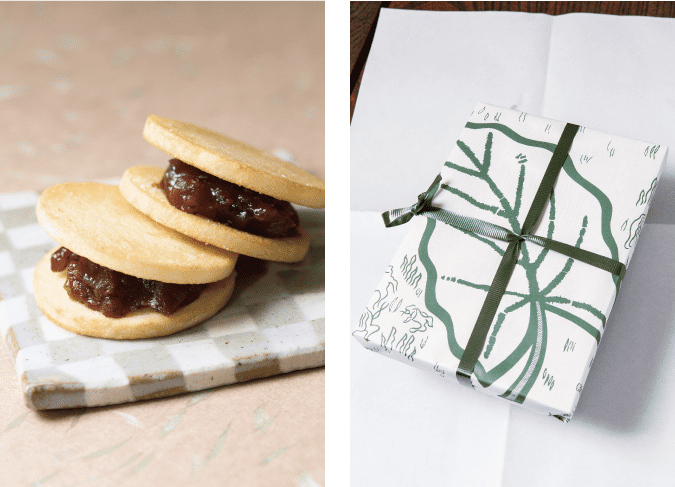
You definitely need to have delicious sweets when you enjoy cherry blossoms.
“Age-Monaka” from “Nakazato” is one of Komagome’s specialties that sells 800 pieces a day. “In spring, many people drop by here when visiting Rikugien Gardens,” says the fifth-generation owner, Suzuki Shun. The monaka is deep-fried in the finest Taihaku sesame oil, so they are fragrant yet light. The harmony of the sweetness of the red bean paste and the flavor of the toasted salt is exquisite. Be sure to get some for cherry blossom viewing and souvenirs. “Hama-rikyu” at the city center and unique “Rikugien”; Please enjoy two very different cherry blossom viewing experiences in Tokyo.
【DATA】
Rikugien Gardens
6-16-3, Honkomagome, Bunkyo-ku, Tokyo
Phone: +81(0) 3-3941-2222 (Rikugien Gardens Service Center)
Admission: ¥300 (65 and over: ¥150)
(Free admission for children aged 12 or younger and junior high school students living or attending school in Tokyo)
Opening Hours: 9:00~17:00 (last admission at 16:30)
Free admission on May 4 and October 1
Toyo Bunko Museum
2-28-21, Honkomagome, Bunkyo-ku, Tokyo
Phone: +81(0) 3-3942-0280
Admission: ¥900 (Junior high school students and high school students ¥600)
Opening Hours:10:00~19:00 (last admission at 18:30) (Reading room:9:30~16:30)
Closed: Tuesdays. (Wednesday if Tuesday is a holiday), New Year holidays, and during exhibition changeover
Discount available for those who have Rikugien Gardens tickets
Nakazato
1-6-11, Nakazato Kita-ku Tokyo
Phone: +81(0) 3-3823-2571
10:00~18:00
Opening Hours:
Monday-Friday: 10:00~18:00
Saturdays and holidays: 10:00~17:00
Closed: Sundays (Irregular hours)
Sightseeing
Explore the Neighborhood of RIHGA Royal Hotel Tokyo
Stay at the RIHGA Royal Hotel Tokyo and visit spiritual sites and the Kanda River.
Sacred Water with Healing Powers!
Mizu Inari Jinja
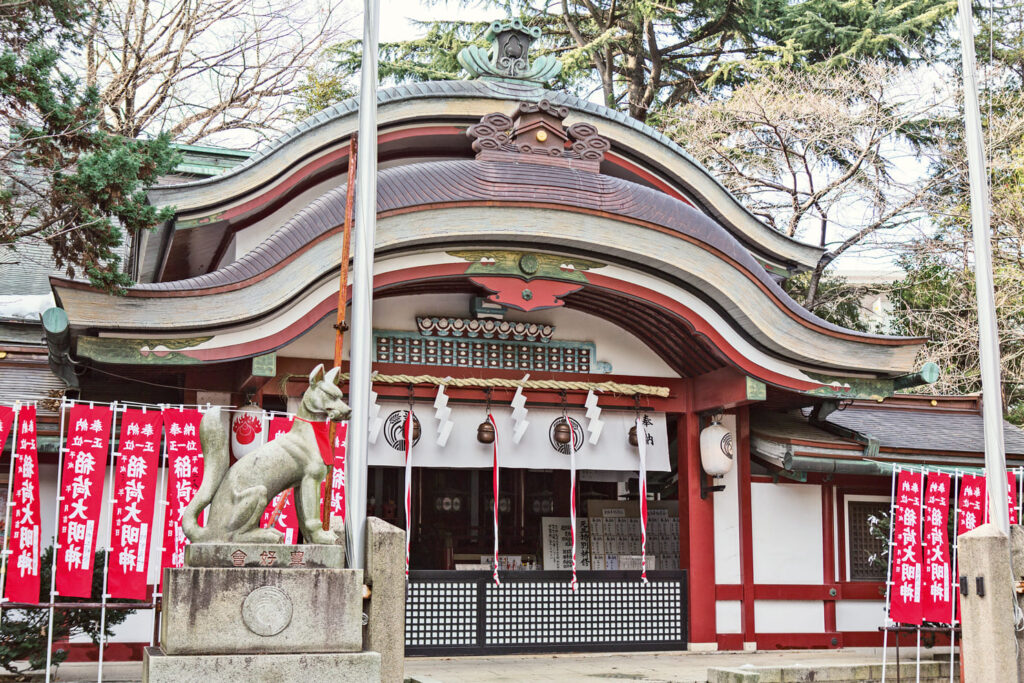
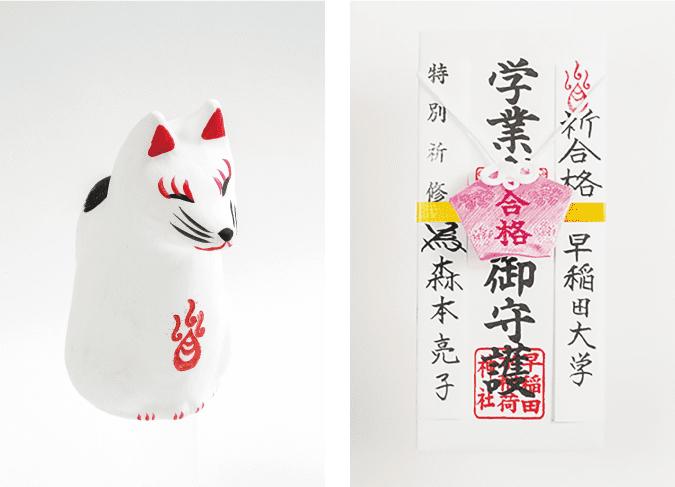
Mizu Inari Jinja
3-5-43, Nishiwaseda, Shinjuku-ku, Tokyo
Free Admission
Phone: +81(0) 3-3200-4621
Cherry Blossoms in a Tranquil Garden
Higo-Hosokawa Garden
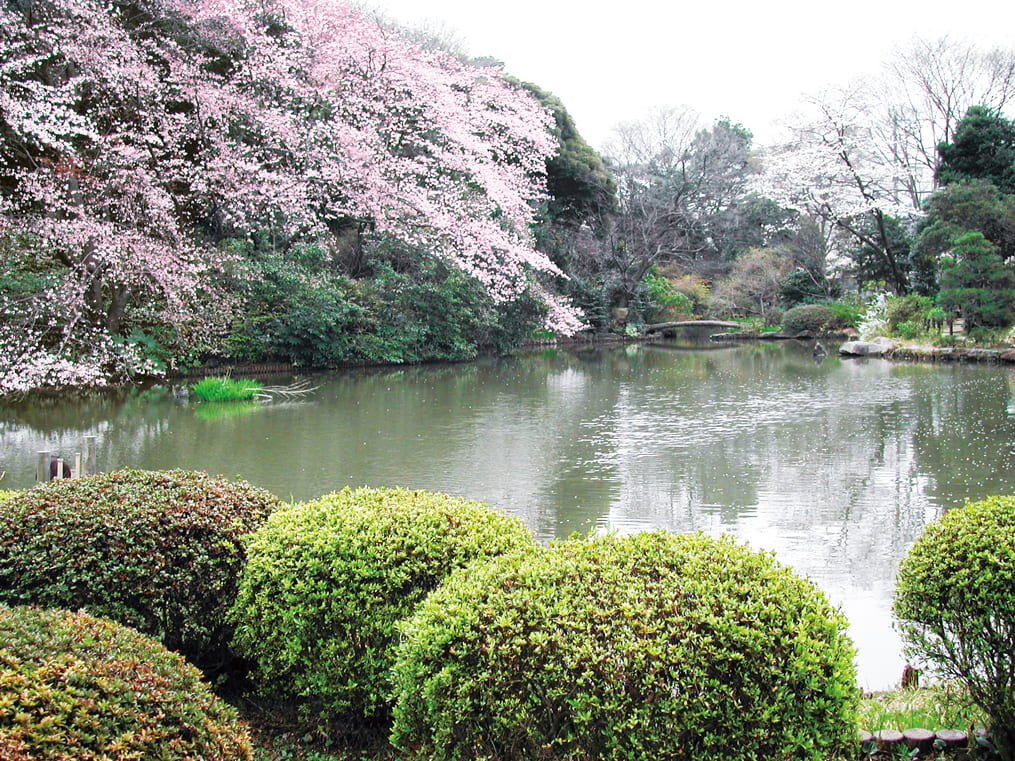
Higo-Hosokawa Garden
1-1-22, Mejirodai, Bunkyo-ku, Tokyo
9:00~17:00 (last admission at 16:30)
(November-January: 9:00~16:30)
Some parts of the garden are under renovation.
